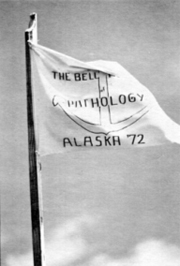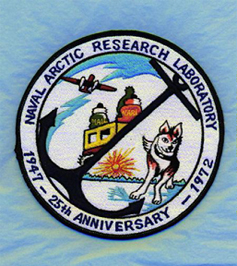
Education
Career
Career related
Academic
Creative works
Books
Radio & Films
Civic
Awards & Honors
Experiential refer
Biopsychosocial Health
International foundation
Archival Photos
Occasional Essays
Irish Elk (Cervus Megaceros)
Naval Arctic Research Laboratory
Klacelka at Zelizy
Japanese word - HAGAKURE
Career
Career related
Academic
Creative works
Books
Radio & Films
Civic
Awards & Honors
Experiential refer
Biopsychosocial Health
International foundation
Archival Photos
Occasional Essays
Irish Elk (Cervus Megaceros)
Naval Arctic Research Laboratory
Klacelka at Zelizy
Japanese word - HAGAKURE



NAVAL ARCTIC RESEARCH LABORATORY
In 1972 the Naval Arctic Research Laboratory at Point Barrow, Alaska, (the farthestmost northern point of the USA) celebrated its 25th anniversary. In the summer of that same year, the Bell Museum of Pathobiology of the University of Minnesota Medical School, under the leadership of Dr Stacey Day, undertook a chronobiologic physiologic study, in conjunction with NARL. Subjective, psychomotor, physiological, and physical data were obtained on a group of volunteer medical students quartered in absolute isolation on the open tundra at Meade River Camp, 55 miles S.W. of Point Barrow. Access to the camp was by plane only. Food and supplies for the test group was brought in by a small aircraft once every week. Otherwise the students were left to their own choices and devices of what they wished to do. Some trekked over the tundra; others studied caribou and wildlife. One female student undertook field studies of the flowers that grow in this region. Because of the continuous arctic summer light the students lived by a “Special Clock” which had been so engineered that when it registered the passing of one day, in fact only 21 hours had passed. Over several weeks changes in exogenous and endogenous factors determining biopsychosocial rhythms and patterns were studied to evaluate desynchronizations between the artificially imposed schedule and the previous natural or endogenous rhythms of the same group earlier recorded in Minnesota. Performance of tasks, psychomotor efficiency, and attitudes in the student volunteers were studied as models of how behavior might change for say, new observers tasked to undertake DEW (Early Warning) Observation and work in such a unique arctic environment. The “Bell Museum Flag” was made by the students and hoisted over their encampment.
In 1972 the Naval Arctic Research Laboratory at Point Barrow, Alaska, (the farthestmost northern point of the USA) celebrated its 25th anniversary. In the summer of that same year, the Bell Museum of Pathobiology of the University of Minnesota Medical School, under the leadership of Dr Stacey Day, undertook a chronobiologic physiologic study, in conjunction with NARL. Subjective, psychomotor, physiological, and physical data were obtained on a group of volunteer medical students quartered in absolute isolation on the open tundra at Meade River Camp, 55 miles S.W. of Point Barrow. Access to the camp was by plane only. Food and supplies for the test group was brought in by a small aircraft once every week. Otherwise the students were left to their own choices and devices of what they wished to do. Some trekked over the tundra; others studied caribou and wildlife. One female student undertook field studies of the flowers that grow in this region. Because of the continuous arctic summer light the students lived by a “Special Clock” which had been so engineered that when it registered the passing of one day, in fact only 21 hours had passed. Over several weeks changes in exogenous and endogenous factors determining biopsychosocial rhythms and patterns were studied to evaluate desynchronizations between the artificially imposed schedule and the previous natural or endogenous rhythms of the same group earlier recorded in Minnesota. Performance of tasks, psychomotor efficiency, and attitudes in the student volunteers were studied as models of how behavior might change for say, new observers tasked to undertake DEW (Early Warning) Observation and work in such a unique arctic environment. The “Bell Museum Flag” was made by the students and hoisted over their encampment.
 |
 |
| Bell Museum flag erected by students on the open tundra. 1972. Meade River, Alaska. | 25th Anniversary Commemoration Insignia, NARL. 1972. Point Barrow, Alaska. |